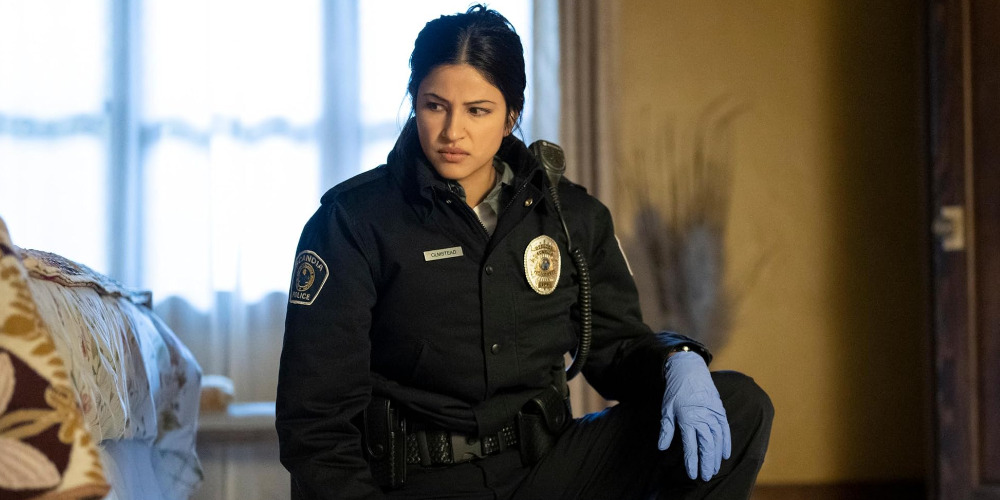Returning with the fifth adaptation in its crime drama series, Noah Hawley’s ‘Fargo‘ continues its exploration of the American landscape through a new mystery’s unraveling. For the fifth season, the narrative takes the viewers to Minnesota in 2019, where a woman, Dorothy “Dot” Lyon, who appears to be a picture-perfect midwestern housewife, finds herself in a tricky situation. Despite being entangled in a kidnapping, Dot vehemently declines to be a part of it when officers Indira Olmstead and Witt Far come knocking on her door. However, things escalate when Roy Tillman, a constitutional sheriff who shares a taut past with Dot, seeks her out.
Being a Fargo installment, season 5 comes with the “based on a true story” banner that has historically accompanied each iteration within the anthology series. For the same reason, alongside the season’s obvious typical political and societal themes, it only makes sense for people to be curious about the story’s basis in reality.
Debt: The Season’s Primary Theme
Although a true story title card may accompany every season of Fargo, in reminiscence of the original Coen Brothers’ eponymous 1996 film, the series isn’t actually based on events that have unfolded in real life. Instead, Hawley, the show’s creator, only uses the tag as a way to tell his story devoid of an expected hero’s journey and present his audience with an unlikely and exciting tale.

In 2021, Hawley spoke about the same in a conversation with Bustle and said, “[Under a true story tag] You’re allowed to say, well look, I know the story goes in a weird or crazy direction now, but that’s just the way it happened.” Consequently, season 5, with its fictional storyline and characters, is no exception.
Nevertheless, like other installments before it, season 5 maintains a tether to reality but uses its fictional narratives to explore real-life quintessential American experiences. This time around, the idea of debt becomes a crucial theme that viewers will find laced through multiple plotlines and character arcs. The creator had financial debt in mind while creating this season, which remains noticeable through characters like Richa Moorjani’s Indira and Jennifer Jason Leigh’s Lorraine Lyon.
Yet, Hawley also wanted to explore a more social perception of debt as it pertains to an individual’s relationships and responsibilities. Through a number of storylines, the season delves into this topic— which seems particularly fitting for today’s social and political climate. “That’s always my approach. What’s the right ‘Fargo’ for this moment?” explained the creator. “And by this moment, I mean, a year and a half from now, you know what I mean?”
Dot’s Storyline and Midwestern Nice
Continuing on the topic of debt as it relates to ‘Fargo’ season 5, Hawley said, “In the case of ‘Fargo,’ it’s about the marriage vows and what do you really owe to the husband who beats you, and what do you really owe to the mother who dominates you?” In doing so, he pulled the focus on the story’s protagonist, Dot.

Since Hawley embarks on each season with the mindset of exploring different sides of American women’s experiences, this time, he wanted to highlight the intricacies of Dot’s story, which outlines an issue that remains high in social relevance if pretty sensitive. Speaking about the same, the creator said, “It was certainly the most difficult season for me in managing tone because there’s nothing funny about domestic abuse.”
“There’s nothing funny about the way that women’s mental health is the first thing that’s questioned when they start saying things that men don’t like. And so the key was keeping the tone grounded and real while availing ourselves of the comic potential in some of these moments.”
According to statistics, one in three women has experienced physical violence by an intimate partner in some form or another. Furthermore, in 2019, 83 domestic violence misdemeanors and 36 active protective orders occurred, according to the records Minnesota submitted to the NICS Index. Therefore, the season garners much authenticity from the care and attention with which Dot’s socially significant narrative is handled.
Likewise, in true ‘Fargo’ fashion, this season also continues to delve into the idea of “Minnesota nice,” something Hawley considers to be the underlying concept in The Coens’ film. While the concept proposes a reality where people bottle up their anger and frustration in favor of politeness, Hawley realized the same couldn’t be farther from the truth in the context of 2019.
“There was no such thing as passive aggression anymore [in 2019],” said Hawley. “It felt it was just aggression. So what does that mean for a society where people have stopped trying to protect each other’s feelings?” Therefore, the season delves into the political climate of the time, specifically through Republican-centered characters. Ultimately, through an amalgamation of all these socio-political and economic points of relatability and commentary, ‘Fargo’ season 5, like its predecessors, brings a fictional story rich in influence from reality.
Read More: Where Was Fargo Season 5 Filmed?


You must be logged in to post a comment.